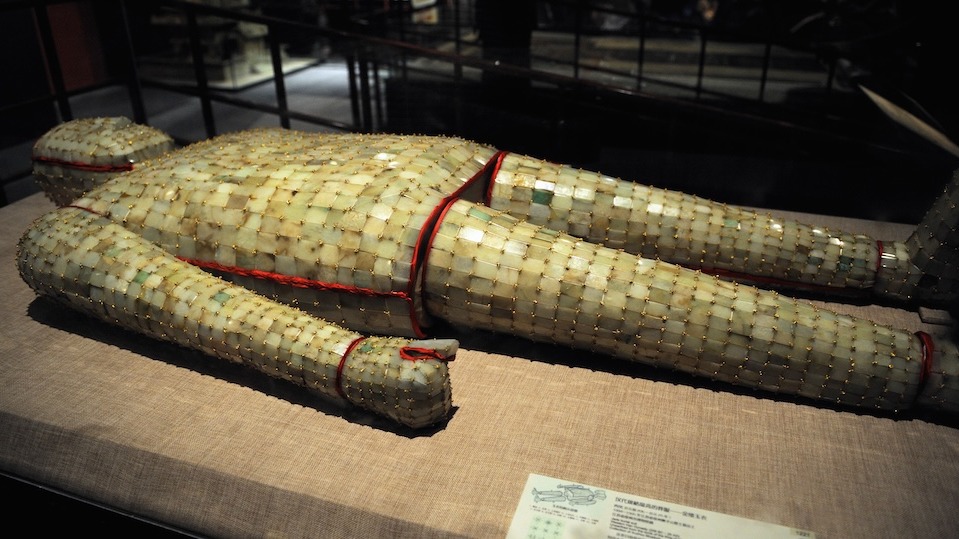Jade burial suit: 2,000-year-old 'immortality' armor worn by Chinese royalty
The jade burial suit was made using thousands of pieces of jade held together with gold thread.

Name: Jade burial suit
What it is: A type of ceremonial suit constructed of jade pieces and worn by royal members of China's Han dynasty (ruled from 206 B.C. to A.D. 220), as well as later rulers and elites, when they were buried.
Where it is from: China
When it was made: Approximately 2,000 years ago
Related: Babylonian Map of the World: The oldest known map of the ancient world
What it tells us about the past: Each burial suit was made using thousands of uniquely shaped pieces of jade, which artisans stitched together using gold thread. The masterfully crafted suits were "built as armor" to protect the deceased in the afterlife and to "prevent mortal decay," according to UNESCO. It appears ancient Han royalty also believed the suits protected the soul.
"The ensemble of jades protected the body and the soul in their entirety, enabling the deceased to attain immortality," according to the Metropolitan Museum of Art in New York City.
Get the world’s most fascinating discoveries delivered straight to your inbox.
While ancient texts had referenced the suits, it wasn't until 1968 that archaeologists found real-life examples when they discovered two in Hebei province in northeastern China. The suits were used in the burials of Han dynasty ruler Liu Sheng, the Prince of Zhongshan, and his wife, Princess Dou Wan.
In addition to the armor, both individuals were found with jade pieces covering their eyes and plugs in their ears and other bodily orifices. Sheng's suit contained an incredible 2,498 individual pieces of jade. Researchers estimate it would have taken 10 years to create his suit, UNESCO reported.
Researchers also discovered a set of rules titled "The Book of Later Han," which describes in detail how the suits were made and how different types of thread should be used depending on a person's social status. For example, an emperor's suit used only gold thread, whereas lower-ranking elites' suits were crafted with silk thread.
However, the elaborate burial practice was halted in the 500s during the reign of Emperor Wen of Western Wei, since the highly valued suits were being targeted by looters.
Jennifer Nalewicki is former Live Science staff writer and Salt Lake City-based journalist whose work has been featured in The New York Times, Smithsonian Magazine, Scientific American, Popular Mechanics and more. She covers several science topics from planet Earth to paleontology and archaeology to health and culture. Prior to freelancing, Jennifer held an Editor role at Time Inc. Jennifer has a bachelor's degree in Journalism from The University of Texas at Austin.


